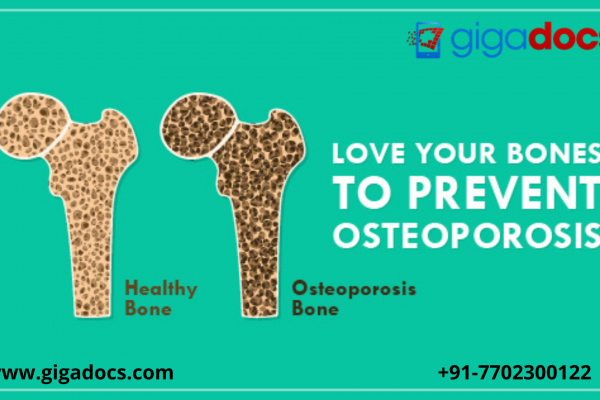Obesity occurs when one consumes more calories, especially from fatty and sugary meals than they can burn off. These excess calories are stored by the body as fat. As the world battles the covid pandemic, people have begun to recognize the importance of eating healthy and maintaining a balanced diet to fight obesity. Ever wondered what is obesity after all?
A body mass index (BMI) of 25 and higher is the steppingstone to obesity. With changing lifestyles, including spending time sitting at offices and lounging in couches, obesity can be the root cause of diseases, raising the risk of health complications which are discussed in the next section.
Obesity and Probability of Diseases
Excess body fat raises the risk of significant health concerns, which include-
- Gallstones Asthma
- Diabetes
- Hypertension
- Obesity
- High cholesterol
- Atherosclerosis (where fatty deposits narrow your arteries)
- Coronary heart disease
- Stroke
- Cancers- including bowel cancer, breast cancer, and womb cancer
- GERD
- Impaired fertility
- Osteoarthritis- severe joint pain and stiffness
- Sleep apnea (interrupted breathing during sleep)
- Higher risk of diabetes
- Renal disease
- Renal disease
- Pregnancy problems, such as gestational diabetes or pre-eclampsia
Aside from these concerns, being overweight and consequently obese can shorten your life span, damage your natural cognitive abilities, and lead to depression and low levels of confidence.
| Do you know? Obesity decreases life expectancy by three to ten years on an average, depending on severity. |
How is Obesity Measured?
Three factors that assess whether a person’s body fat increases their risk of getting obesity-related diseases, which include:
- BMI (Body Mass Index)
- Waist circumference
- Other risk factors
Body mass index (BMI)
Experts frequently use BMI to identify whether a person is overweight. BMI is a comprehensive indicator of your body mass based on your height and weight. A high BMI can suggest a high level of body fat.
| BMI Range | Health Range |
| Less than 18.5 | Underweight |
| 18.5 to <25 | Healthy weight |
| 25.0 to <30 | Overweight range |
| 30.0 or higher | Obesity range |
| 30 to < 35 | Class I Obesity |
| 35 to < 40 | Class II Obesity |
| 40 or higher | Severe Obesity |
- Word of caution-
BMI can be misleading to diagnose obesity since people with a lot of muscle can have a high BMI without fat.
Waist Size
Speaking holistically, waist size is a better indicator of excess fat. Waist size is an excellent measure to quantify the degree of fatness in addition to BMI in the case of overweight (BMI 25-29.9) to moderately obese (BMI 30-34.9) people.
Women with waist measurements more than 35 inches (89 centimeters) and men with waist measurements greater than 40 inches (102 centimeters) are at a higher risk of heart disease and type 2 diabetes. People with “apple-shaped” bodies (waists that are larger than hips) are also at a higher disease risk.
Obesity Risk Factors
Having a risk factor for a disease does not imply that you will develop it. However, it does enhance the likelihood that you will. The greater the number of risk factors, the more likely you will get the disease or health problem. Obesity raises your risk of having health problems such as-
- Hypertension
- High levels of cholesterol or triglycerides in the blood
- Diabetes
Obesity Myths Debunked
- Obesity is the result of bad lifestyle choices.
Fact: Most obesity programs attribute obesity to poor dietary habits and a lack of physical activity. Obese persons are frequently accused of being “lazy” or lacking motivation. While food and lack of exercise may play a part, several other factors contribute to the rise in obesity.
- Obese individuals have slower metabolisms.
Fact: Body composition, not weight, determines how fast your metabolism is.
Larger bodies require more energy to carry out basic activities, their resting metabolic rates are higher.
- Obesity is just a concern for adults.
Fact: Since early childhood is a period of rapid growth, many people believe that overweight children will eventually lose it. However, children may not always outgrow obesity or being overweight once they turn old.
| Anti-Obesity Day Every year on November 26th, Anti-Obesity Day is observed to raise awareness about the most serious diseases that come with obesity, afflicting people worldwide. Obesity is a medical disorder in which people gain a lot of weight in a short period. It can also lead to different pressing health problems, including heart disease, diabetes, high blood pressure, and some types of cancer. |
Treating obesity
Obesity does not have a short route to losing the flab
Obesity can be addressed by frequently monitoring your weight, setting real objectives, eating a nutritious, low-calorie diet, and exercising regularly. You should perform the following to achieve this:
- Follow a calorie-controlled, well-balanced diet as prescribed by a nutritionist.
- Take up exercises such as walking, running, swimming, or tennis for 150 to 300 minutes (2.5 to 5 hours) per week, eat carefully and avoid occasions where you are likely to overeat.
You may also benefit from psychological counseling from a skilled medical professional to help you rethink your view on food and eating. Furthermore, weight loss surgery may work in extreme cases. Consult the best nutritionists and doctors on the Gigadocs app, download the app from-
- IOS App – apple.co/2W2iG4V
- Android App – bit.ly/33AQoRC
To know more and schedule a Virtual Consultation demo, e-mail at info@gigadocs.com




